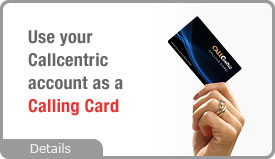Pastebud, a bookmarklet/webapp combo that works around the lack of a copy or paste function in the iPhone and iPod touch, has just gone live. And it's surprisingly elegant and painless, with a few small hitches.

Update: Pastebud's servers seem to be getting a solid traffic hit this morning, so the page, and service, might be hit-and-miss for a while after this post. Also, a note about copying email text is added below.
At its heart, Pastebud is two bookmarklets—COPY and PASTE, naturally—that you install in your mobile Safari browser. If you sync your iPhone/touch to grab bookmarks from a desktop browser like Safari or Internet Explorer, it's easier to just head to Pastebud's site, drag the bookmarklets to your browser toolbar, and sync your device. If not, you can still head to Pastebud's site in mobile Safari and add the bookmarks, but you'll have to manually edit them to remove all the formatting before the javascript: code—something users of the Instapaper bookmarking app are all too familiar with.
Once you've installed the bookmarks (and probably re-arranged them higher in your list), you can head to any web page containing text you want to copy to a web form or email. Hit the "COPY" bookmark, and all the page text gets sent to Pastebud and put into a JavaScript-powered applet, where you select the particular text to copy by tapping and dragging to select.

The two buttons at the top, an e-mail style "compose" on the left and "copy" on the right, send you to your email client and back to the web, respectively. As you can see, the text selected in the pic above arrives just fine in the Mail client—including links!

One small issue, though, at least for those who don't pay $5 to Pastebud—it inserts a little "Pasted from my iPhone!" and promotion link in every paste. You can delete it, of course, but it's there every time:

The Pastebud web site also notes that you can forward emails you want to copy/quote from to "your secret Pastebud address," which you should then add to your email contacts. I didn't get to try this out this morning before Pastebud's server(s) got slammed, so if you have, let us know in the comments.
Pasting that copied text to any box on the web is just as easy, but comes with its own little nag. After selecting the text and hitting "Copy," simply browse to any site you want to paste to and hit the "PASTE" bookmarklet. Pastebud loads the page in its webapp again, and you click the "PASTE HERE" box to, well, paste there.

And once your text arrives, you get a little pop-up box, asking you to upgrade for $5 to "make it even more convenient":

For what it's worth, I've got nothing against the developer of a seriously inventive app system asking for a small fee inside their free-for-all version—just letting you know it's there before you dive in.
Pastebud's creator has a step-by-step walkthrough on installing the bookmarklets and using the system at his page (which changes depending on if you visit from mobile Safari or another browser). As for the privacy of your copied text, this is what's posted:
It's certainly safe enough for most uses. All clipboards are anonymous, and destroyed withing five minutes of copy. Email addresses are not saved on the server; we only use them to reply for copying. However, since your clipboard is being passed over the network in most cases, you should take care not to send anything sensitive.
There's also SSL connections, destroy-on-paste, and other security measures on the way for paying users, according to the developer's page.











 If you've found the prompt, or human, you want to connect to, simply hit the button and Fonolo asks which of your phones you want to be called on when it gets through. It's not instant, because Fonolo is actually doing the drudgery of dialing, pressing "1" for English, hitting "3" for customer service on existing accounts, etc. And you can watch it happen—or, actually, just walk away and wait for your cell to ring:
If you've found the prompt, or human, you want to connect to, simply hit the button and Fonolo asks which of your phones you want to be called on when it gets through. It's not instant, because Fonolo is actually doing the drudgery of dialing, pressing "1" for English, hitting "3" for customer service on existing accounts, etc. And you can watch it happen—or, actually, just walk away and wait for your cell to ring:



 With 5 wires connected to the Touch headphone jack (instead of 4 on the previous model), the device now supports the external microphone included with some headsets, according to Kyle Wiens of
With 5 wires connected to the Touch headphone jack (instead of 4 on the previous model), the device now supports the external microphone included with some headsets, according to Kyle Wiens of 

 Phone Number Scan delivers quite a good look-up service. It has a large, up to date database and reliable customer support along with low prices.
Phone Number Scan delivers quite a good look-up service. It has a large, up to date database and reliable customer support along with low prices.
